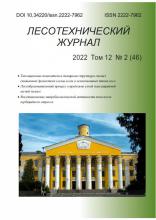Voronezh, Voronezh, Russian Federation
The article is devoted to research on the effect of phytoncide properties of oak grown in plantations of forest and park area of Voronezh on the growth and development of oak gallflies. The aim is to study the oak pests - oak gallflies - small flying insects. The female of gall wasps makes injection on an oak leaf using the ovipositor and lays eggs in the wound, which is beginning to develop, and the next underlying cells and tissues begin to form sheet "nut" or plant gall. Soon the larva hatches from the egg and begins to work its jaws. All larval development occurs in the gall. It turns out that from the time of laying the egg and then the larva during all the time of its development are in close proximity to the plant tissues and phytoncides. So, oak leaf tissue is not toxic to the larvae of gallflies. Meanwhile, it is well known that volatile phytoncides of oak leaves are poisonous to many microorganisms including the very resistant, for example, for the dysentery bacillus. When laying eggs in the leaf tissue insects necessarily hurt it. Namely wound leaf increases the "production" of phytoncides, but it remains without consequences for the insect to adapt to phytoncides of oak leaves. This adaptation of some insects to poisonous phytoncides affects equally scientists. One of the major reasons of sanitary and hygienic influence of the forest is the antimicrobial effect of the volatile, which secrete plant organizations as they play an important role in chemical interaction of plants in phytocenoses, that was proved by the works of N. G. Kholodny, A. L.Kholodny, A. L. Chesovennaya (1987) – the number of phytoncides and their activity in one and the same species varies with conditions of oak forest location
gallflies, coppice oak forests, phytoncides, antimicrobial activity.
В связи с недостаточным числом опытов по изучению бактерицидности летучих выделений дуба в естественных условиях трудно сделать какие – либо выводы об особенностях выделений, обуславливающих увеличение численности патогенных бактерий. Исследования Т.В. Старовойтовой и Е.С. Лахно (1967) [1, 4, 5, 10], ещё раз убеждают в том, что проблема изучения бактерицидных свойств летучих фитонцидов дуба в различных условиях произрастания актуальна и требует разрешения путем интенсификации исследований по данной теме.
1. Karelina V. I., Tokin B. P. Fitoncidnye svojstva raznyh rastenij [Fitoncidnye svojstva raznyh rastenij] Fitoncidy: sbornik nauchnyh issledovanij. [Phytoncides: collection of scientific research]. Tomsk, 1944, pp. 70-86. (In Russian).
2. Tokin B. P. Biologicheskaja rol' fitoncidov [Biologicheskaja rol' fitoncidov] Fitoncidy: ocherki ob antiseptikah rastitel'nogo proishozhdenija [Fitoncidy: ocherki ob antiseptikah rastitel'nogo proishozhdenija] Moscow, 1948, pp. 141-154.
3. Ajzenman B. E., Bondarenko A. E., Drobot'ko V. G. Fitoncidy, ih biologicheskaja rol' i znachenie dlja mediciny i narodnogo hozjajstva [Fitoncidy, ih biologicheskaja rol' i znachenie dlja mediciny i narodnogo hozjajstva] :. - Kiev, 1967, 373 p. (In Russian).
4. Roshhina V. D. K voprosu ob izmenenii fitoncidnoj aktivnosti v godichnom cikle razvitija tochek drevesnyh porod [To the question about changing the phytoncide activity in the annual cycle of development of the buds of tree species]. Celebnye yadi rasteniy [Medicinal poisons of plants]. Leningrad, 1967, pp. 56-61. (In Russian).
5. Tokin B. P. Fitoncidy, ih rol' v prirode i znachenie dlja mediciny: sbornik issledovanij [Phytoncides, their role in nature and importance for medicine: collection of studies] Moscow,1952, 335 P. (In Russian). EDN: https://elibrary.ru/YPXSOA
6. Bryncev P. I. Fitoncidnost' osnovnyh drevesnyh i kustarnikovyh porod zelenoj zony g. Moskvy: avtoref. kand. s.-h. nauk. [Phytoncide of major tree and shrub species of the green zone of Moscow: author. cand. of agricultural sciences] Moscow, 1954, 20 p. (In Russian).
7. Kazbanova I. M. Fauna dubovyh orehotvorok v poroslevyh dubravah zeljonoj zony g. Voronezha [Fauna of oak gallflies in coppice oak forests in the green area of Voronezh] Lesnye kul'tury i selekcija : materiali nauchno-prakt. konf. [Forest cultures and selection: materials of scientific and practical conference]. Voronezh, 2005, pp. 45-48. (In Russian).
8. José Alberto Gallegos-Infant, Nuria Elizabeth Rocha-Guzmán Rubén Francisco González-Laredo, Luis Medina- Torres, Carlos Alberto Gomez-Aldapa, Luz Araceli Ochoa-Martínez, Cecilia Eugenia Martínez-Sánchez, Betsabe Hernández- Santos, Juan Rodríguez-Ramíre Physicochemical properties and antioxidant capacity of oak (Quercus resinosa) leaf infusions encapsulated by spray-drying Original Research Article Food Bioscience. Vol. 2, June 2013. pp. 31-38.
9. Rosie Grayburn, Mark Dowsett, Michel De Keersmaecker, Eric Westenbrink Time-lapse synchrotron X-ray diffraction to monitor conservation coatings for heritage lead in atmospheres polluted with oak-emitted volatile organic compounds Original Research Article Corrosion Science. Vol. 82, May 2014, pp. 280-289.
10. Michio Oguro, Sawako Imahiro, Shoichi Saito, Tohru Nakashizuka Relative importance of multiple scale factors to oak tree mortality due to Japanese oak wilt disease Original Research Article Forest Ecology and Management. Vol. 356, 15 Novembe, 2015, pp. 173-183.












